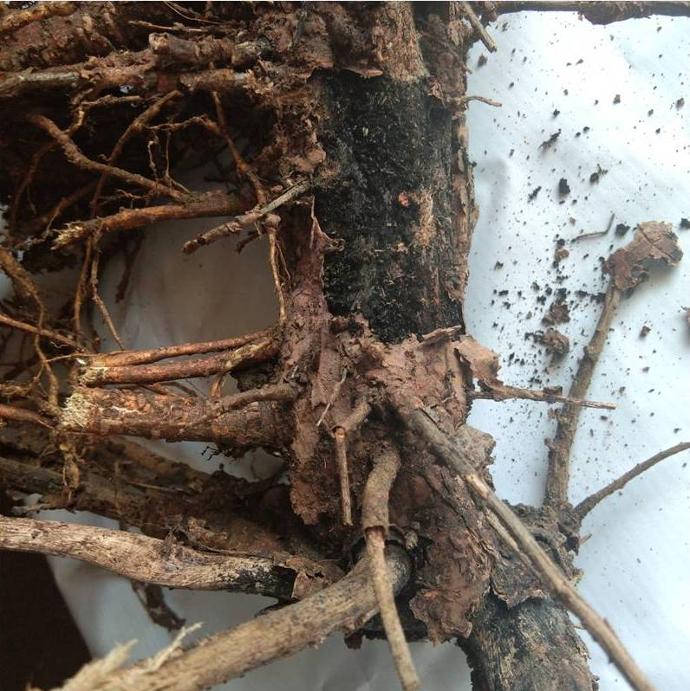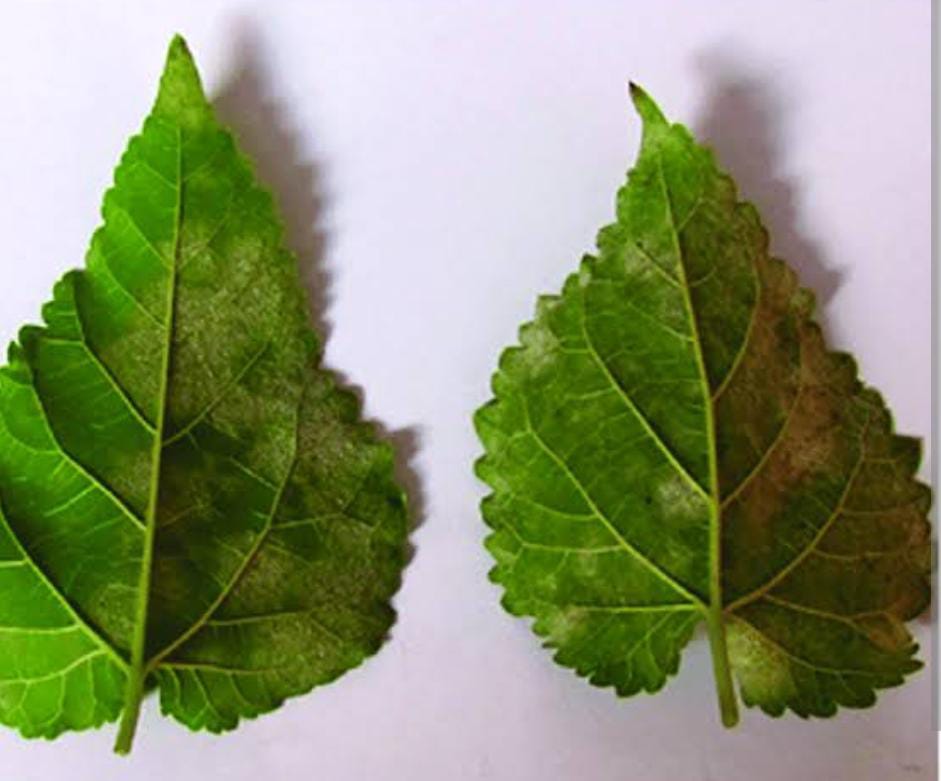Black Mulberry Plant
Black mulberry trees, 30-50 feet tall in Zones 5-9, exhibit fast growth in well-drained soil and full sun. They produce tasty and edible black mulberries.
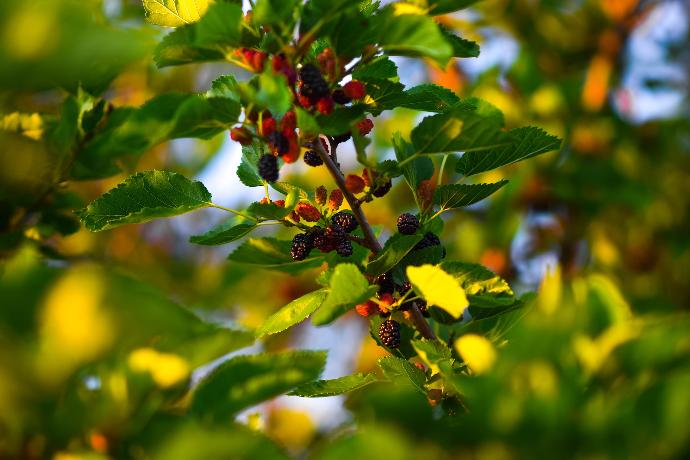
Habit
Tree
Height
4-10 m
Growth
Fast
Soil
Well-drained, loamy
Shade
Full Sun
Moisture
Moderate
Edible
Yes
Medicinal
Yes
Origin
Asia, Europe
Climatic Condition
Temperate
Temperature (°)
20-30°C
Humidity (%)
60-80%
Potting media
Loam + Sand
Fertilizers
Balanced NPK (10:10:10)
Watering
Regular watering
Plant Weight
1-2 kg
Flowering Time
Spring to Summer
Soil Ph level
6.0-7.0
Water Ph level
6.5-7.0
Soil EC
1.0 dS/m
Yield Per Plant
High yield
NPK ratio
10:10:10
life Span
25-30 years
Health Benefits
Rich in antioxidants, heart health
Suggested Grow Media or Potting Mix ?
50% loamy soil, 30% compost, 20% sand
Suggested Fertigation/Fertilizers
Fertilize every 4 weeks with a balanced fertilizer.
Common Diseases and Remedies
Root Rot , Powdery Mildew
Leaf blade turns black , white patches on leaves
FYM , Field Sanitation
HEALTH BENEFITS
· High in vitamin C and iron, boosting immunity and blood health.
· Supports brain health and may help manage blood sugar levels.
· Rich in antioxidants, protecting against oxidative stress.
What is Black Mulberry?
Black mulberry (Morus nigra) is a deciduous tree native to Western Asia and the Eastern Mediterranean region. It is grown for its sweet, juicy and delicious fruit called mulberry. The tree is known for its large, heart-shaped leaves and its ability to thrive in many climates. Black mulberry trees can grow up to 30 feet tall and produce fruit from late spring through summer. The fruits are usually red to black in color and are often used in jams, jellies and desserts.
What Are The Different Types Of Black Mulberry
1. Morus nigra:
It is the most common species of black tree and is found in Southeast Asia and the Eastern Mediterranean. It is known for its large, heart-shaped leaves and its ability to thrive in a variety of climates.
2. Morus alba:
Native to Southeast Asia, this black tree is known for its large, glossy leaves and its ability to grow in different soil types.
3. Mulberry:
Native to North America, this black tree is known for its small, sweet fruit and its ability to grow in various climates.
4. Morus macroura:
This black tree, native to South America, is known for its large, sweet fruit and its ability to grow in many soil types.
5. Mulberry:
This black tree, native to Australia, is known for its small, sweet fruit and its ability to grow in many .
How to care for Black Mulberry?
Location
Black oak (Morus nigra) is native to Western Asia and the Eastern Mediterranean. They are well-suited to a variety of climates and soil types, but prefer full sun and well-drained soil. Black mulberries can be grown in U.S. Department of Agriculture hardiness zones 5 through 9, which cover most of the United States. In cold climates, it can be grown in containers and brought indoors during the winter months. When planting a black mulberry tree, it is important to choose a location that receives at least six hours of sunlight per day and has good drainage.
Sunlight
Black mulberry trees (Morus nigra) thrive in full sun, which means they need at least six hours of direct sunlight per day. They can tolerate partial shade but will not produce as much fruit in these conditions. When planting a black mulberry tree, it is important to choose a location that receives full sun every day. If you are planting in an area where sunlight is limited, consider cutting back nearby trees or buildings to allow more sunlight to reach the plant. Also make sure the soil is well-drained because black trees do not like wet feet.
Soil
Black mulberry (Morus nigra) prefers well-drained soils rich in organic matter. They tolerate many soil types, including sand, loam and clay, but do not like wet feet. When planting a black mulberry tree, it is important to choose a place with good drainage so that the roots do not retain water. If you're growing in heavy clay soil, consider amending the soil with compost or other organic matter to improve drainage. Additionally, the black mulberry tree prefers a slightly acidic to neutral soil pH, so it's a good idea to test the soil pH before planting and make any necessary adjustments.
Hydration
Black mulberry (Morus nigra) should be watered regularly, especially in the first few years after planting. They like moist, well-drained soil and should be watered deeply once or twice a week, depending on weather and soil conditions. Black mulberry trees need to be watered more frequently in hot and dry weather to prevent the soil from drying out completely. It is important to water from the base of the tree rather than the top to prevent fungal diseases and root rot. Additionally, mulching around the tree's roots can help retain moisture and reduce the need for frequent watering.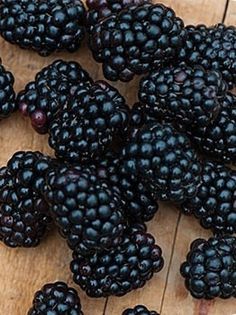
Nourishment
black mulberry trees (Morus nigra) benefit from regular planting, which encourages good growth and fruit production. It is recommended that black mulberry trees use a balanced fertilizer (N-P-K) containing equal amounts of nitrogen, phosphorus and potassium. Fertilize the tree in early spring before new growth begins and again in late spring or early summer after the tree has completed flowering and fruiting. Avoid fertilizing your tree in late summer or fall because this encourages new growth that will be damaged by frost. Additionally, mulching organic matter around the tree's roots, such as compost or old manure, can help provide nutrients and improve soil health.
Issues
Although black mulberry trees (Morus nigra) are generally hardy and easy to grow, they can be subject to some problems:1. Root rot: Black mulberry trees do not like wet feet, so it is important to plant in well-drained soil and avoid overwatering. If the soil is too wet, root rot can develop, causing leaves to turn yellow, wilt, and eventually cause the tree to die.
2. Fungal diseases: Black mulberry trees are sensitive to fungal diseases such as powdery mildew and leaf diseases. These diseases can cause yellowing or browning of leaves and before leaf fall. To prevent fungal diseases, do not overwater and keep the area around the tree's roots free of debris.
What Are The Benefits Of Mulberry?
Black mulberry (Morus nigra) has many benefits:
1. Edible Fruit: The biggest benefit of mulberry is its delicious and healthy fruit. Black mulberries are rich in vitamins C and K and antioxidants and have a sweet, juicy taste; this makes them a popular ingredient in jams, jellies and desserts.
2. Stunning leaves: Black mulberry trees have large, heart-shaped, dark green leaves. The leaves are attractive and provide shade during the summer months.
3. Wildlife Habitat: Mulberry trees provide habitat and food for many wildlife, including birds and small animals. Its fruit is a favorite of many birds, and its leaves are food for caterpillars and other insects.
4. Soil Erosion Control: The deep root system of black mulberry helps stabilize the soil and prevent erosion. This is especially good in areas with steep slopes or loose soil.
5. Ornamental value: Black mulberry has an elegant, spreading character and can be used as a model tree or flower bed. They also produce small, inconspicuous flowers that are attractive to bees and other pollinators in spring.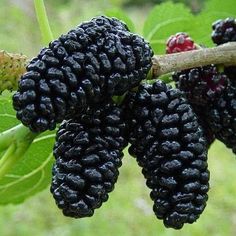
FAQs About Growing Black Mulberry
1. How to save Black mulberry
Management of black mulberry trees (Morus nigra) has several important functions:
1. * Watering *: Black mulberry trees should be watered deeply once or twice a week, depending on weather and soil conditions. Water at the base of the tree rather than the top to prevent fungal disease and root rot.
2. Fertilization: Fertilize black mulberry trees in early spring before new growth begins and again in late spring or early summer after the tree has completed flowering and fruiting. Use a balanced fertilizer containing equal amounts of nitrogen, phosphorus and potassium (N-P-K).
3. * Pruning *: Prune black mulberry trees in late winter or early spring to remove dead or damaged branches and tree shape. Remove suckers growing from the base of the tree to preserve a trunk
4. Mulch: Mulch around the tree's roots with organic matter, such as compost or old manure, to help retain moisture and reduce weeds. Keep mulch several inches away from the trunk to prevent rot.
2. What are the uses of mulberry tree?
Black mulberry (Morus nigra) has many uses:1. Edible Fruit:
Black mulberry is frequently used due to its delicious and healthy fruits. Black mulberries are rich in vitamins C and K and antioxidants and have a sweet, juicy taste; this makes them a popular ingredient in jams, jellies and desserts.
2. Medical Use: In traditional medicine, black mulberry is used to treat many diseases such as digestive problems, colds and pain. The leaves of the black mulberry tree are also used to make tea and are believed to have diuretic and laxative properties.
3. Wildlife Habitat: Mulberry trees provide habitat and food for many wildlife, including birds and small animals. Its fruit is a favorite of many birds, and its leaves are food for caterpillars and other insects.
4. Ornamental value: Black mulberry has a graceful spreading habit and can be used as a specimen tree or mixed flower bed. They also produce small, inconspicuous flowers that are attractive to bees and other pollinators in spring.
3. Can black mulberry be grown indoors?
Yes, black mulberries (Morus nigra) can be grown indoors, but remember that these are large trees that can grow up to 30 feet tall. Therefore, you will need a large container and enough space for the plant to grow. Black mulberries also need full sun, so you'll need to place the box in a location that gets at least six hours of direct sunlight per day.When growing mulberries indoors, it is important to choose a well-drained potting mix and water regularly to keep the soil evenly moist. You may also want to feed your tree regularly with a balanced amount of fertilizer to encourage healthy growth.Remember that black trees can be messy because they lose fruit and leaves every year. Therefore, you should be ready to maintain your tree regularly.In general, although black mulberry can be grown indoors, it would be better to grow small mulberries such as dwarf mulberry (Morus nigra 'Dwarf Everbearing'), which is better for the grow box.
4. What is the best type of pot for growing black trees?
When growing black mulberry (Morus nigra) in pots, it is important to choose a container large enough to fit the tree's root system and provide sufficient water. A pot at least 24 inches wide and 18 inches deep is recommended for young trees, while older trees may need a larger container.Plastic, ceramic and clay pots are suitable for growing black mulberries. Plastic pots are lightweight and easy to move, while ceramic and terracotta pots are more attractive and can help protect roots from heat and cold.When choosing a pot, make sure it has a drainage hole at the bottom to drain excess water. If the pot does not have a drain, you can pierce it yourself to collect excess water or use a pot with a removable pot.In general, the best pots for growing black mulberry trees are pots that are large enough to accommodate the root system of the tree, have sufficient water and are made of durable materials.
5. Where can I buy black mulberries?
Black mulberry (Morus nigra) is available from many sources, including nurseries, garden centers and online stores. Here are some options for purchasing a black mulberry tree:1. Local Nurseries and Garden Centers: Many nurseries and gardens carry black trees, especially in areas where their fruit is popular. Visit your local nursery or garden center to see if they have black trees in stock.2. * Online Stores *: There are many online stores that sell black mulberries, including Amazon, eBay and Etsy. The black oak trees were purchased from Stark Bro's Nurseries & Orchards Co. You can find it in private garden centers such as. and Nature Hills Nursery.
